Are you tired of staring at that awkward empty space in your living room, unsure how to make it stylish and functional? You’re not alone. Many homeowners and renters struggle with how to decorate unused corners or blank walls.
A well-decorated living room transforms your space into a cozy, inviting haven. I faced the same challenge while setting up my first home, and after much research—and helping friends along the way—I’ve gathered plenty of creative and practical ideas. This article will guide you with expert tips to help you fill that empty space in your living room beautifully.
Are you tired of staring at that empty corner in your living room and wondering how to fill it with life and style?
You’re not alone. Many homeowners, renters, and interior design enthusiasts face the challenge of decorating empty spaces in their living rooms.
So, what to put in empty space in living room?
Well, I was in a similar boat while I was setting up my first home a few years back. I researched a lot and come up with some great ideas. In fact, I have also helped many of my friends as well to set up their living room properly.
In this article will help you by offering many creative and practical ideas to turn your living room into a cozy and inviting haven. Empty spaces in a living room can be both an opportunity and a challenge.
On the one hand, they offer a blank canvas for your creativity; on the other, it can be overwhelming to decide how to fill them in a functional and aesthetically pleasing way.
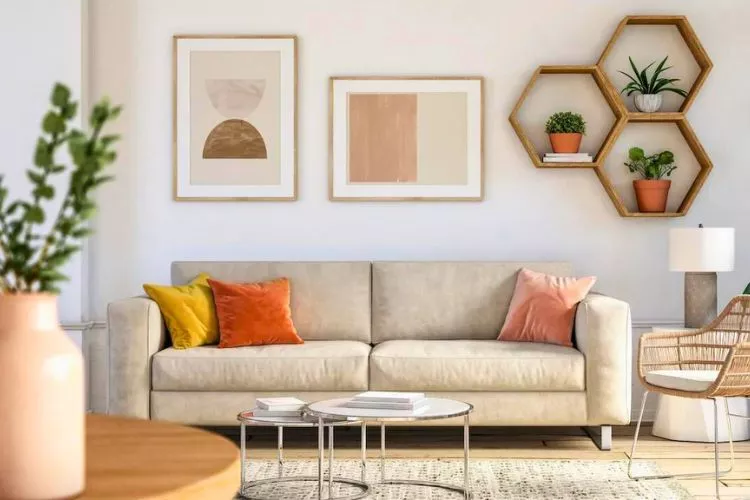
I will guide you through the process, providing expert tips and inspiration to make the most of your living room’s empty spaces.
Quick Recommendations
Last update on 2025-05-15 / Affiliate links / Images from Amazon Product Advertising API
what to put in empty space in living room? (Some Creative Ideas)
Filling empty spaces in your living room is essential for creating a warm, inviting, and functional space. Empty spaces can make a room feel incomplete and unbalanced.
This guide will provide practical tips and inspiration to transform those empty spaces into beautiful and functional areas that reflect your style.
Assess the Space
Before diving into decorating:
- Assess the space in your living room.
- Measure the area and consider the flow of foot traffic. This will help you determine the size and type of furniture or decor that will work best in the space.
- Consider the room’s layout and how the additions complement or enhance the overall design.
Furniture Placement
Arranging furniture effectively can significantly impact the feel and function of your living room. Here are some suggestions:
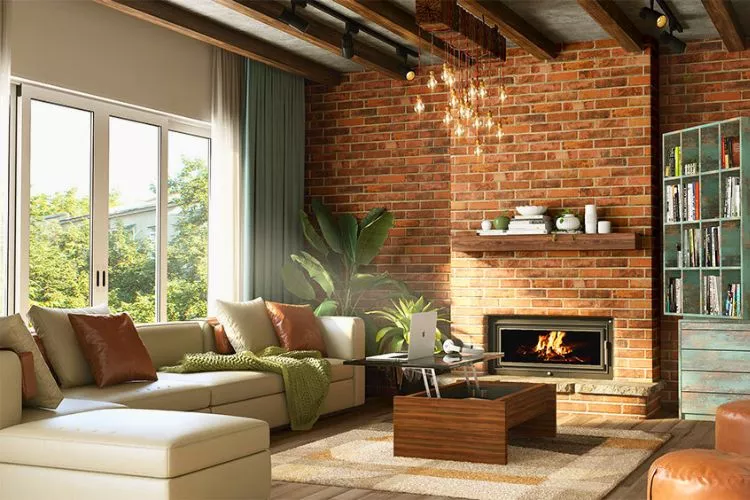
- Create conversation areas by grouping seating around a central coffee table or focal point.
- Use multi-functional furniture, such as a storage ottoman or a sofa bed, to maximize space and utility.
- Add a statement piece, like a bold armchair or an eye-catching coffee table, to anchor the space and draw attention.
Wall Decor
Wall decor is a powerful tool to bring life, personality, and depth to empty spaces. Consider the following options:
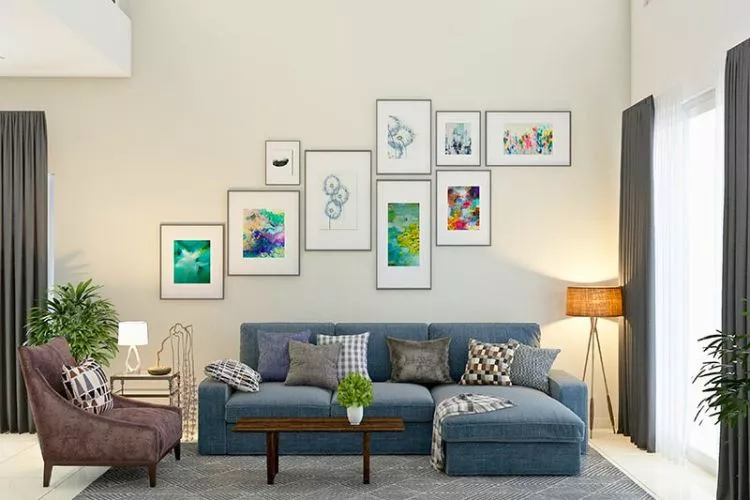
- Display artwork that complements the room’s color scheme and style. Choose pieces that evoke emotions or reflect your interests. Consider large-scale pieces for a bold statement or a series of smaller works to create a cohesive theme.
- Install shelves to showcase your favorite books, collectibles, or decorative items. Floating, ladder, or corner shelves are great options to utilize empty wall space while adding visual interest and functionality.
- Create a gallery wall using a mix of framed photos, prints, and other wall art for a personalized touch. Play with different frame styles, sizes, and colors to add variety and depth. You can also include mirrors, clocks, or other decorative elements to make the gallery wall unique.
- Experiment with wall treatments, such as wallpaper, decals, or stencils, to add texture and pattern to the space. These treatments can create a focal point or add a touch of sophistication to your living room.
Lighting
Proper lighting is essential for creating a welcoming atmosphere and filling empty spaces. Consider these ideas:
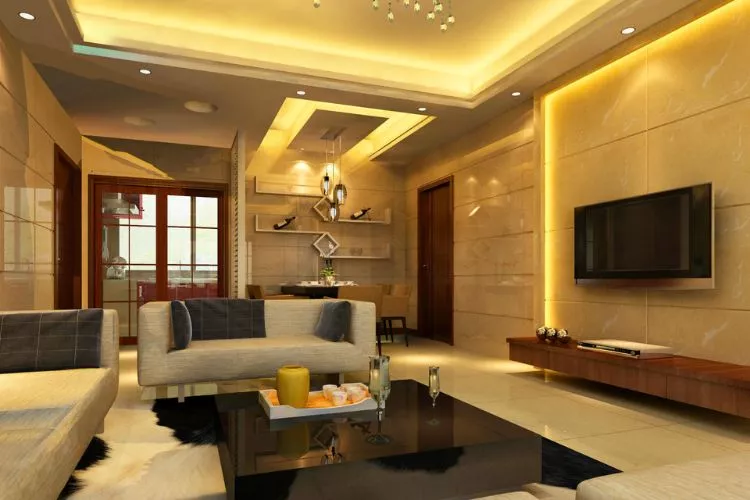
- Use table or floor lamps to create a cozy reading nook or accentuate a specific area. Choose lamps with interesting shapes, materials, or colors to add a decorative element to the space.
- Add string lights for a whimsical touch and to provide ambient lighting. Drape them across a wall, around a window, or along a bookshelf to create a warm and inviting glow.
- Install wall sconces or pendant lights to highlight artwork or architectural features. These lighting options can add a touch of elegance and draw attention to specific areas of the room.
Plants and Greenery
Incorporating plants and greenery can breathe life into your living room and fill empty spaces:
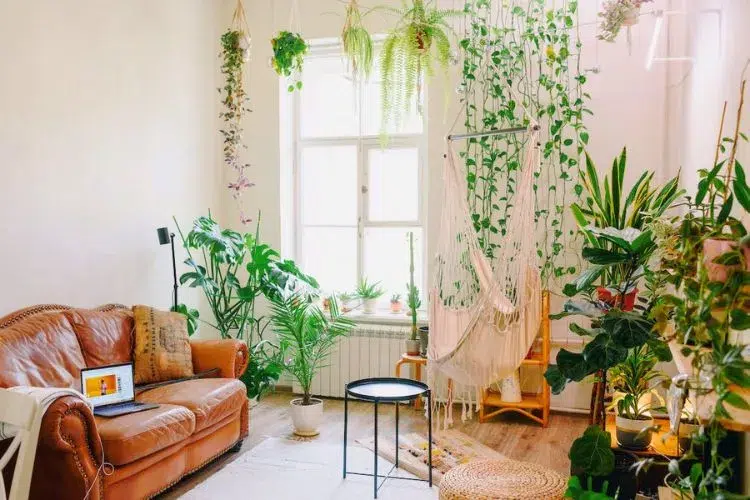
- Hang plants from the ceiling or place them on shelves to add visual interest and height. Use macrame plant hangers, hanging pots, or even repurposed items like ladders or wooden crates to display your plants creatively.
- Use potted plants of varying sizes and shapes to create a lush, layered look. Combine tall plants like fiddle leaf figs with smaller ones like pothos or snake plants to add depth and dimension to the space.
- Incorporate low-maintenance succulents or air plants for a touch of greenery without needing constant care. Display them in unique planters, terrariums, or even mounted on the wall to make a living art piece.
Other uncommon ways to fill empty spaces in your living room
Several other ways exist to fill empty spaces in your living room beyond the earlier options. Here are some additional ideas:
- Floor Decor: Add an area rug to anchor the space, define different zones, and add warmth and texture. Choose a rug that complements your room’s color scheme and style, and experiment with different patterns and materials.
- Room Dividers: Use room dividers or screens to create separate areas within the living room, especially in open-concept spaces. This can help make the room feel more cozy and intimate. You can use folding screens, bookshelves, or even curtains as dividers.
- Window Treatments: Enhance your living room’s empty spaces by dressing up your windows with curtains, blinds, or shades. This adds visual interest, provides privacy, and controls natural light.
- Seating Nooks: Create a cozy seating nook in an empty living room corner with a comfortable chair, a small side table, and a soft throw blanket. This can serve as a quiet spot for reading, relaxing, or enjoying a cup of coffee.
- Accent Furniture: Add accent furniture like a console table, side table, or bench to fill empty spaces and provide additional surface area for displaying decor items, storing essentials, or offering extra seating.
- Personal Collections: Showcase your collections, such as travel souvenirs, vintage items, or family heirlooms, to add character and personality to your living room. Display them on shelves, in a curio cabinet, or on a dedicated accent wall.
- Theme or Style: Choose a theme or style for your living room and incorporate elements that reflect it throughout the space. This can help tie the room together and make it more cohesive and thoughtfully designed.
- Textiles: Use decorative pillows, throw blankets, or tapestries to add color, texture, and comfort to your living room. These items can easily be switched out to refresh the space or adapt to seasonal changes.
Remember, balancing aesthetics and functionality is the key to filling empty spaces in your living room. Consider your style, the room’s purpose, and the available space when choosing how to fill the empty areas.
In summary, filling empty spaces in your living room can be achieved through thoughtful furniture placement, wall decor, lighting, and adding plants and greenery.
Assess your space, consider your style, and get creative with your choices. By following these tips, you’ll create a living room that is both beautiful and functional, making the most of every inch of your space.
How to fill empty corner in living room?
Filling an empty corner in your living room can add visual interest and functionality. Here are some ideas to help you make the most of that empty corner:
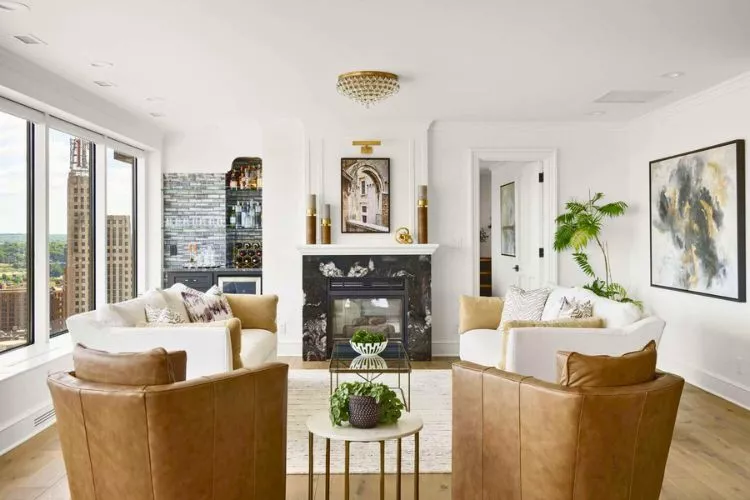
- Create a reading nook: Place a comfortable armchair or a cozy bean bag chair in the corner, a small side table and a floor lamp. Add a plush throw blanket and a few decorative pillows to make it a perfect spot for reading and relaxation.
- Add a corner shelf or bookcase: Install a corner or bookcase to display your favorite books, collectibles, or decorative items. This not only fills the space but also provides additional storage.
- Incorporate plants: Use the empty corner to display potted plants or a small indoor tree. You can use a plant stand, a ladder shelf, or a tiered plant holder to showcase multiple plants and create a mini indoor garden.
- Set up a bar cart: A stylish bar cart can transform an empty corner into a functional and chic spot for entertaining. Stock it with your favorite drinks, glassware, and bar accessories.
- Place a decorative screen: A folding screen can add visual interest, color, and texture to an empty corner while providing a sense of separation or privacy.
- Add a corner bench or banquette: A bench or banquette with built-in storage can provide additional seating and storage in an empty corner. Add some comfortable cushions and pillows to make it an inviting spot to sit.
- Hang wall art or a mirror: Use the vertical space in the corner by hanging a piece of wall art or a decorative mirror. This can help draw the eye upward and make the room more spacious.
- Install a corner fireplace: If you have the budget and space, consider adding a corner fireplace to create a warm and inviting focal point in your living room.
- Set up a small workstation: If you need a workspace in your living room, consider setting up a small desk and chair in the corner. Choose a compact desk with built-in storage to keep the area organized and clutter-free.
- Use a floor lamp: A stylish lamp can add height and light to an empty corner, making it feel more complete and balanced.
How to fill empty floor space in living room?
Filling empty floor space in your living room can make the room feel more inviting and functional. Here are some ideas to help you utilize empty floor space effectively:
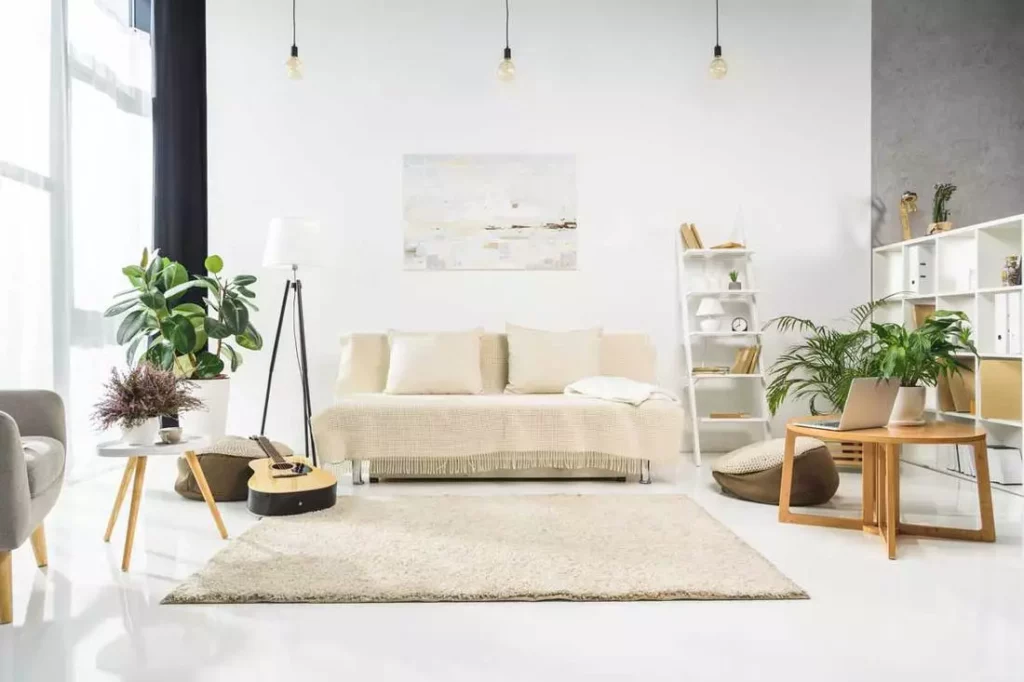
- Add an area rug: An area rug can anchor the space, define different zones, and add warmth and texture to your living room. Choose a rug that complements your room’s color scheme and style, and experiment with different patterns and materials.
- Incorporate additional seating: Consider adding a few floor cushions, poufs, or ottomans to provide extra seating options for guests. These can be easily moved around and stored when not in use.
- Use accent furniture: Add accent furniture, such as a coffee table, side table, or console table, to fill empty floor space and provide additional surface area for displaying decor items or storing essentials.
- Create a play area for kids: If you have children, consider designating a section of the floor space as a play area. Use a colorful rug, storage bins, and low seating options to create a fun and functional space for kids to enjoy.
- Set up a game or hobby area: Dedicate a section of the floor space for board games, puzzles, or other hobbies. Use a low table or a large tray to keep everything organized and easily accessible.
- Add a pet bed or pet area: If you have pets, create a cozy corner for them with a pet bed, toys, and a water bowl. This fills the empty floor space and provides a dedicated spot for your furry friends.
- Incorporate exercise equipment: If you enjoy working out at home, consider using empty floor space for a yoga mat, exercise ball, or other compact workout equipment.
- Create a cozy seating nook: Arrange a comfortable chair or loveseat, a small side table, and a floor lamp to create a cozy spot for reading, relaxing, or having coffee.
- Use storage solutions: Fill empty floor space with functional solutions like a storage ottoman, a decorative trunk, or woven baskets. These can help keep the room organized and clutter-free.
How do you break up space in a large living room?
Breaking up space in a large living room can help create a more cozy and functional atmosphere. Here are some ideas to help you divide and define areas within a large living room:
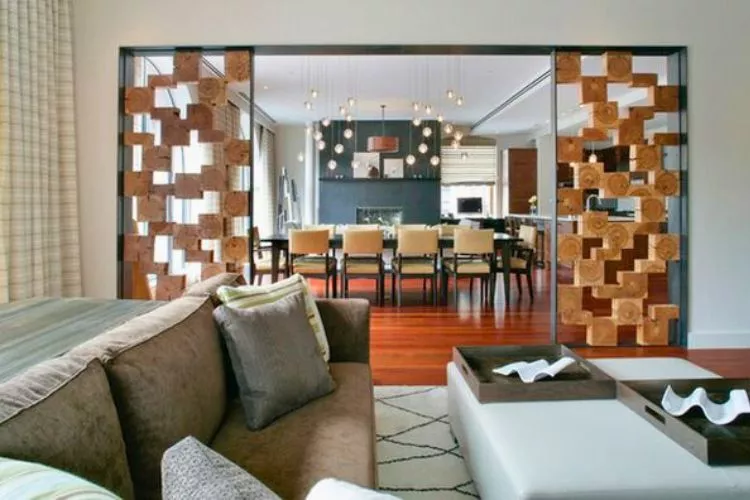
- Use area rugs: Place area rugs in different sections of the room to visually separate and define distinct zones, such as a seating area, a dining area, or a play area.
- Arrange furniture strategically: Group furniture to create distinct conversation, relaxation, or entertainment areas. You can also use furniture pieces, such as a sofa or a console table, as a room divider to separate different zones.
- Incorporate room dividers or screens: Use folding screens, curtains, or open shelving units as room dividers to create separate areas within the living room. These can be easily moved or adjusted as needed.
- Create focal points: Designate specific areas with focal points, such as a fireplace, a large piece of artwork, or a statement lighting fixture. This can help break up the space and draw the eye to different room sections.
- Play with color and texture: Use different colors, patterns, and textures in various room areas to create visual separation and add variety. For example, you can use contrasting throw pillows or curtains in different living room sections.
- Use vertical space: Install tall bookshelves, floor-to-ceiling curtains, or large potted plants to draw the eye upward and create a sense of separation between different areas.
- Incorporate lighting: Use different types of lighting, such as floor lamps, table lamps, or pendant lights, to highlight and define specific areas within the large living room.
- Create a flow: Arrange furniture and decor in a way that guides the eye and directs foot traffic through the various zones of the room. This can help create a sense of movement and separation between different areas.
- Add architectural elements: If your budget and space allow, consider adding architectural elements like columns, half-walls, or built-in cabinetry to divide the room and create distinct zones.
Conclusion:
Filling the space in your living room can greatly enhance your home’s overall atmosphere, functionality, and aesthetic appeal.
From adding greenery and creative storage solutions to incorporating artwork and seating areas, there are numerous ways to transform your living space into a cozy and inviting environment that reflects your style.
By carefully considering your needs, preferences, and available space, you can create a harmonious and well-balanced living area that will bring joy and comfort to you and your loved ones for years to come.




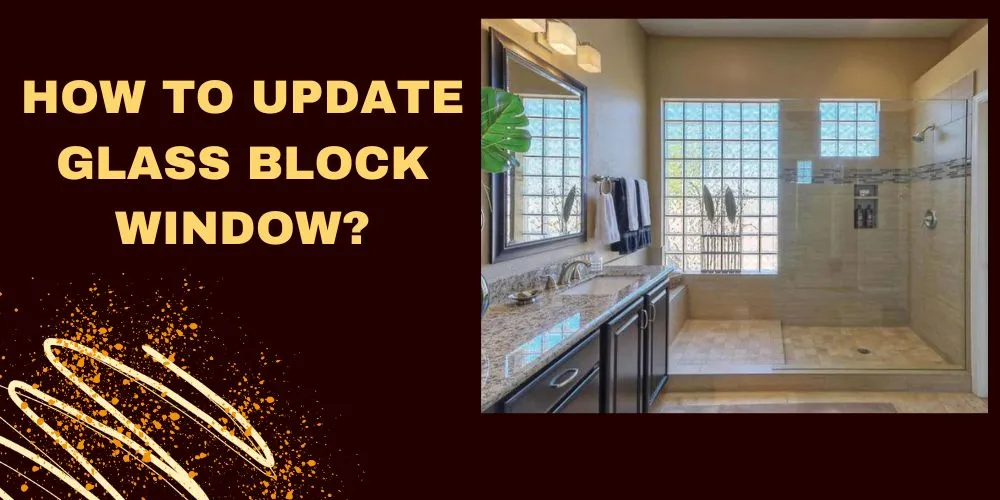

Great experience. Thank u for sharing!.